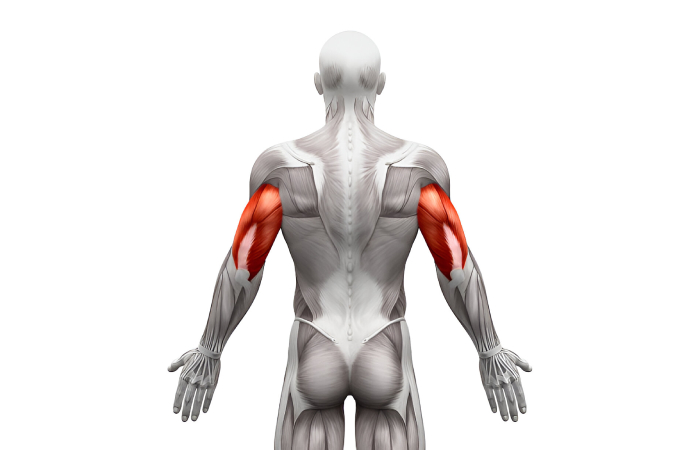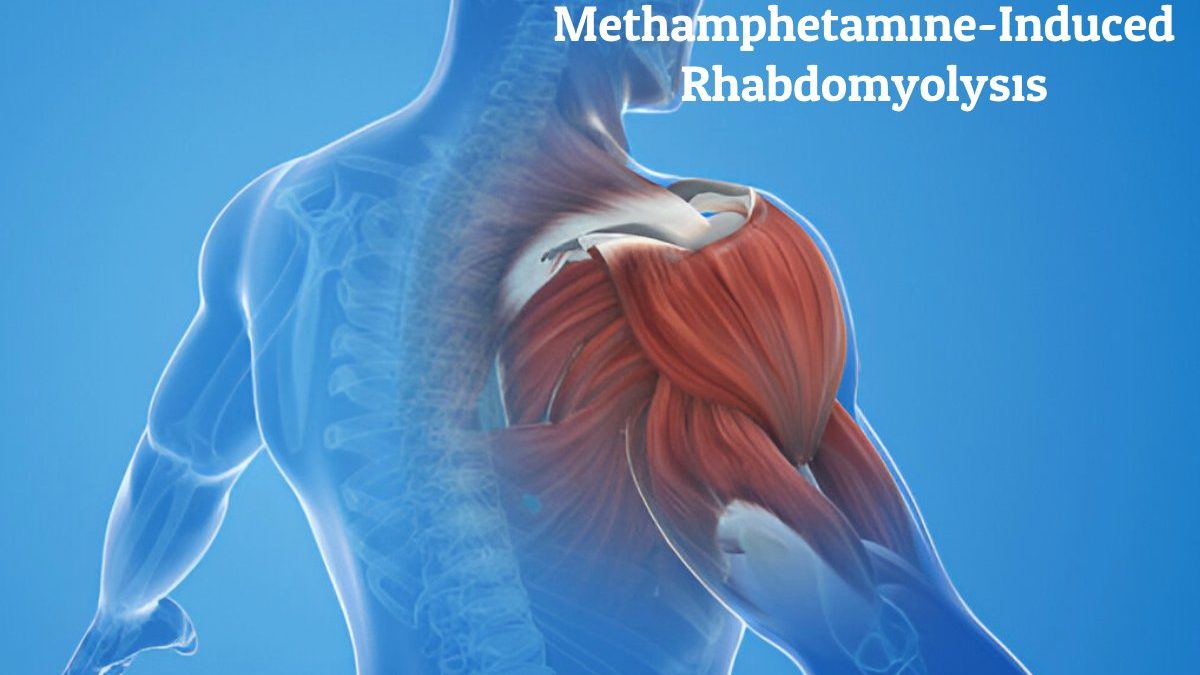Methamphetamine-induced rhabdomyolysis is a severe condition involving rapid destruction of muscle tissue. When someone experiences this, the contents of damaged muscle cells can be released into the bloodstream. Symptoms may include widespread muscle pain and fluctuations in serum electrolytes. If not caught and treated early, it can cause irreversible kidney failure. It’s crucial to seek medicinal attention promptly if you suspect rhabdomyolysis due to methamphetamine use.

Table of Contents
What is Rhabdomyolysis?
Rhabdomyolysis occurs when muscle tissue breaks down. It starts with an increase in calcium in the muscle cells. When this happens, muscle components—like creatine kinase, myoglobin, and electrolytes—are released into the bloodstream. This can become a problem when these byproducts reach a level that is toxic to the body.
The kidney is one of the key affected organs. Myoglobin is harmful to the kidneys, and it can clog up their filtration system as the kidneys try to remove it from the body. When this happens, rhabdomyolysis can cause rapid and serious kidney failure. In occasional cases, it can lead to death.
What Causes Rhabdomyolysis?
Rhabdomyolysis can be caused by various factors. It leads to muscle cell failure and the release of myoglobin (a protein) into the bloodstream.
Some common causes include:
- Physical Trauma: Severe injuries or crush injuries can damage muscle tissue.
- Extreme Exercise: Intense physical activity, especially when unaccustomed, can trigger rhabdomyolysis.
- Drug Use: Certain drugs, including statins (cholesterol-lowering medications), and illicit substances like methamphetamine and alcohol, can contribute.
- Heatstroke: High body temperature due to heat exposure can lead to muscle breakdown.
- Infections: Bacterial or viral infections affecting muscles can cause rhabdomyolysis.
- Electrolyte Imbalances: Abnormal potassium, calcium, or sodium levels can play a role.
- Genetic Disorders: Some inherited conditions increase the risk.
Remember, early finding and treatment are crucial to prevent complications. If you suspect rhabdomyolysis, seek medical help promptly!
What are the Symptoms of Rhabdomyolysis?
Rhabdomyolysis can manifest with several symptoms, including:
- Muscle Pain and Weakness: Widespread muscle pain, tenderness, and weakness are joint.
- Dark Urine: Myoglobin released from damaged muscles can darken urine (often reddish-brown).
- Fatigue: Feeling unusually tired or fatigued.
- Swelling: Swelling in affected muscle groups.
- Nausea and Vomiting: Some individuals experience gastrointestinal symptoms.
- Fever: Elevated body temperature may occur.
Treatment for Methamphetamine-induced Rhabdomyolysis
Methamphetamine-induced rhabdomyolysis requires prompt medical attention. Treatment focuses on several key aspects:
- Fluid Replacement: Intravenous fluids help maintain hydration and prevent kidney damage.
- Electrolyte Correction: Balancing electrolyte levels (such as potassium, calcium, and sodium) is crucial.
- Monitoring Kidney Function: Regular blood tests assess kidney function and guide treatment.
- Addressing Underlying Cause: If methamphetamine use triggers rhabdomyolysis, cessation is essential.
- Pain Management: Pain relievers can alleviate discomfort.
- Hospitalization: In severe cases, hospitalization may be required for close monitoring.
Which Medications Cause Rhabdomyolysis?
A variety of medications have been linked to rhabdomyolysis. Like all other causes of rhabdomyolysis, these medications increase the amount of calcium inside a muscle cell, which kicks off a cascade that leads to muscle breakdown. The most commonly associated medications and drugs include:
- Statins
- Antipsychotics medications
- HIV medications, like Zidovudine (Retrovir)
- Gout medications, like colchicine
- SSRI antidepressants, like Zoloft (sertraline) or paroxetine (Paxil)
- Anesthesia medicines
- Cocaine, heroin, and other recreational substances
About half of the time, rhabdomyolysis occurs within 1 month of starting a new medication.
How to Prevent Methamphetamine-Induced Rhabdomyolysis?
Preventing methamphetamine-induced rhabdomyolysis involves several strategies:
- Avoid Methamphetamine Use: The most effective prevention is to refrain from using methamphetamine or other illicit substances. Seek professional help if you’re struggling with substance abuse.
- Stay Hydrated: Proper hydration helps maintain muscle health. Drink plenty of water throughout the day.
- Gradual Exercise: If you engage in physical activity, incredibly intense exercise builds up gradually. Sudden, extreme exertion can increase the risk of rhabdomyolysis.
- Monitor Symptoms: Look for muscle pain, weakness, and dark urine. If you experience these symptoms, seek medical attention promptly.
- Balanced Electrolytes: Consume a balanced diet with adequate electrolytes (potassium, calcium, sodium). Consult a Doctor if you have concerns.
Remember, early awareness and healthy lifestyle choices are crucial in preventing rhabdomyolysis.
Can Rhabdomyolysis Lead to Permanent Damage?
Rhabdomyolysis can indeed lead to permanent damage, especially if not promptly treated. Here are some potential complications:
- Kidney Damage: The release of myoglobin into the bloodstream can overwhelm the kidneys, leading to acute kidney injury (AKI). In problematic cases, this can result in permanent kidney damage.
- Electrolyte Imbalances: Rhabdomyolysis disrupts electrolyte levels (such as potassium, calcium, and sodium), affecting heart function and other bodily processes.
- Compartment Syndrome: Swelling within muscle compartments can cause pressure buildup, potentially damaging nerves and blood vessels.
- Long-Term Muscle Weakness: Some individuals experience persistent muscle weakness or fatigue after recovery.
The Bottom Line
In conclusion, methamphetamine-induced rhabdomyolysis is a severe condition characterized by muscle cell breakdown due to methamphetamine use. Early detection and quick medication are crucial. To prevent it, avoid methamphetamine, stay hydrated, exercise gradually, monitor symptoms, and maintain balanced electrolytes. Common symptoms include muscle pain, weakness, and dark urine. Consult your doctor if you notice new muscle pain symptoms, especially after medication regimen changes.
Also read:
Wellhealthorganic.Com/How-To-Build-Muscle-Know-Tips-To-Increase-Muscles
Wellhealthorganic.Com:Jaggery-With-Incredible-Health-Benefits


